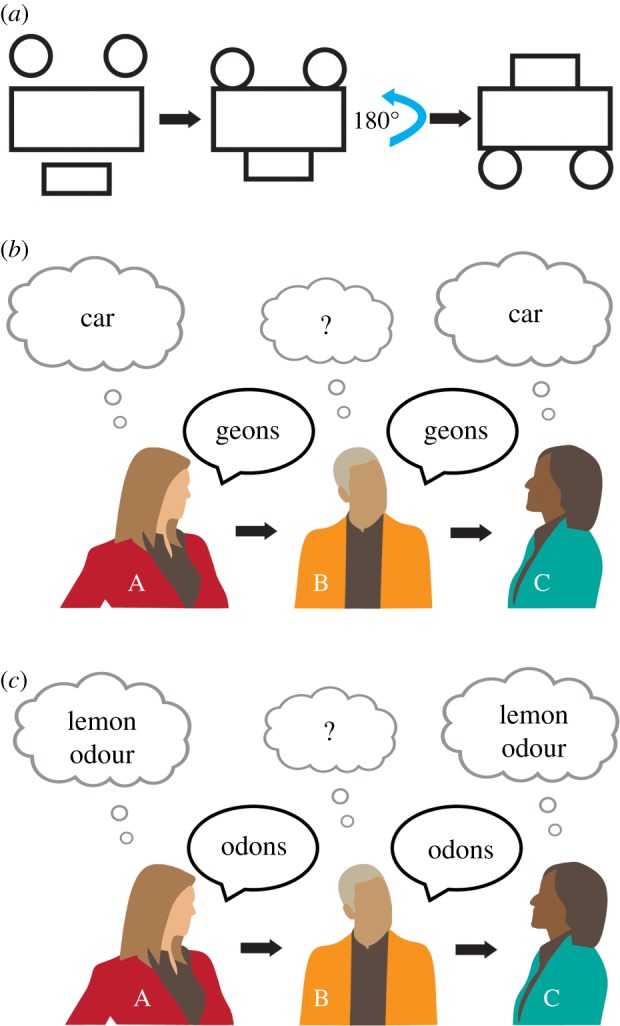Figure 2.

Directed communication and simulation. (a) Illustration of how the manipulation of primitives (in this case rotation) can shift an abstract mental image into a representation of a semantic object (e.g. when this thought exercise is run on undergraduate students informally in class by the first author, the majority of students imagine a car only after rotation). (b) In this scenario, person A has semantic knowledge of cars (i.e. including perceptual facts, ideas and beliefs about cars). Person A uses her knowledge about the visual representation of cars to decompose a car into visual primitives, such as geons, and expresses these and their spatial relationships to person B. Importantly, person B has knowledge only of the primitives, but no semantic knowledge of cars. However, person B can still simulate features of the object and communicate it to person C who has the appropriate primitives and semantic knowledge and thus can simulate and recreate the original object. (c) Can equivalent communication be envisaged for olfaction? If so what kind of odons would be required to do so? We believe this type of task would be difficult to conduct with olfaction.
